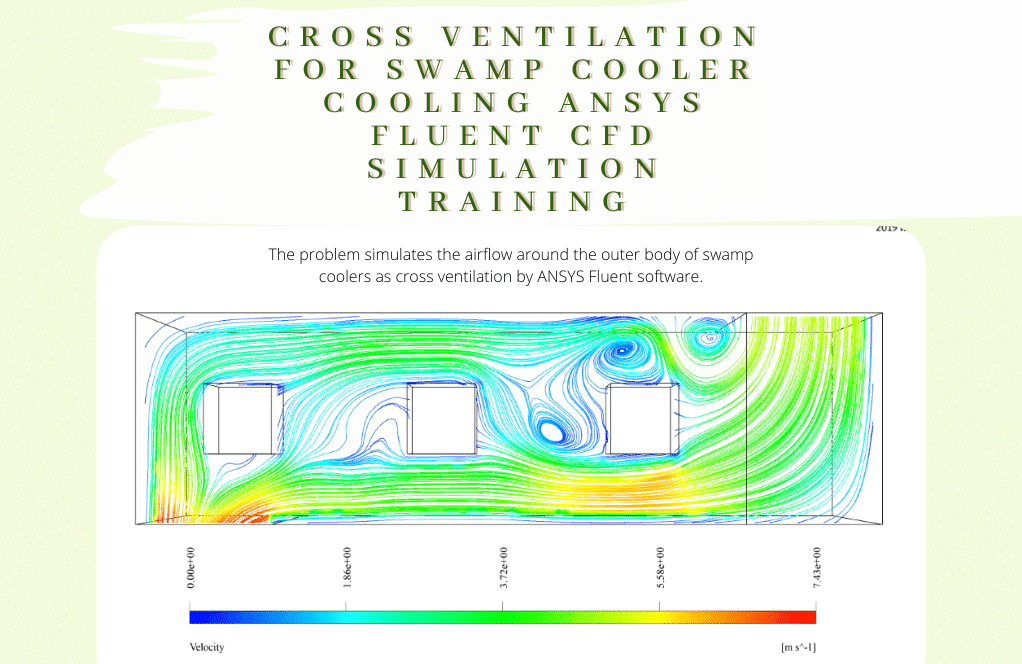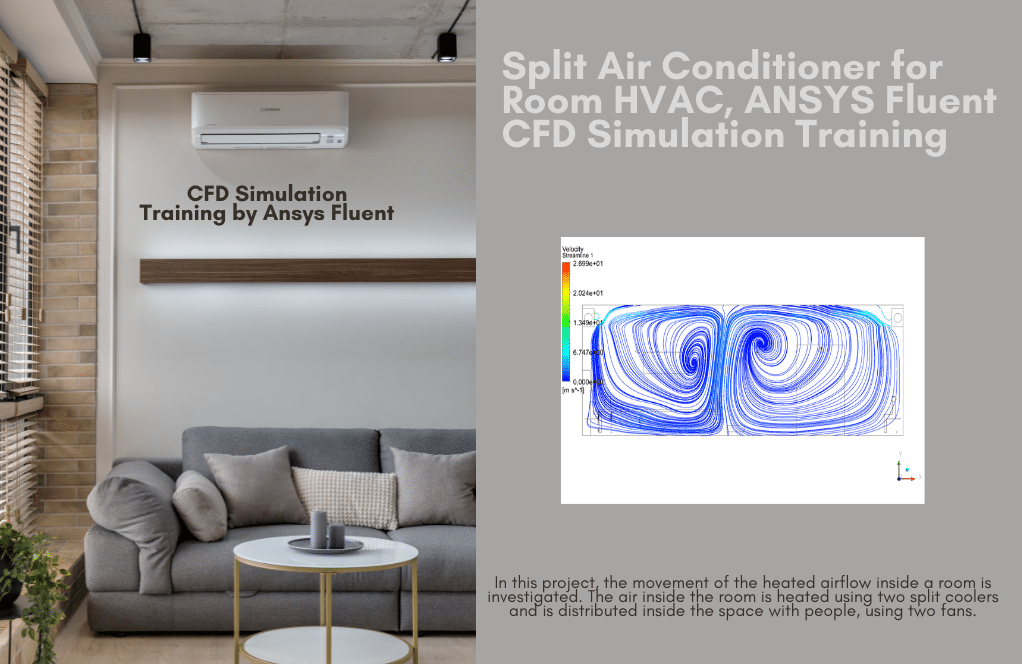Watering the Lawns, Ansys Fluent CFD Simulation Training
$100.00 $50.00 Student Discount
In this project, watering the lawn has been simulated and the results of this simulation have been investigated.
Click on Add To Cart and obtain the Geometry file, Mesh file, and a Comprehensive ANSYS Fluent Training Video.To Order Your Project or benefit from a CFD consultation, contact our experts via email (info@mr-cfd.com), online support tab, or WhatsApp at +44 7443 197273.
There are some Free Products to check our service quality.
If you want the training video in another language instead of English, ask it via info@mr-cfd.com after you buy the product.
Description
Watering the Lawns Project Description
The system consists of two different fluids, including air as the primary fluid and one secondary fluid is water. The Eulerian multiphase model has been used by ANSYS Fluent software. The jet-air is entering the domain with the speed of 0.5 m/s with gravity considered as -9.81 m/s-2 on the y-axis.
Geometry & Mesh
The 2-D geometry of the present model is carried out using Design Modeler software.
The meshing of this present model has been generated by ANSYS Meshing software. The mesh grid is unstructured with no element quality lower than 0.54, and the total cell number is 19203911.
Watering the Lawns CFD Simulation
To simulate the present model, several assumptions are considered, which are:
- The solver is pressure-based and Transient.
- Simulation has only examined fluid behavior; in other words, heat transfer simulation has not been performed.
- The effect of gravity on the flow is considered to be 9.81 m.s-2 and along with the y-axis in the present model.
The following is a summary of the steps for defining the problem and its solution
| Models | ||
| K-omega | Viscous model | |
| SST | k-omega model | |
| shear flow corrections | k-omega options | |
| air | primary phase | |
| water | secondary phase | |
| explicit | formulation | |
| Boundary conditions | ||
| Velocity-inlet | inlet | |
| 0 | initial gauge pressure | mixture |
| 0.5 m/s | velocity magnitude | water |
| 1 | volume fraction | |
| Pressure outlet | outlet | |
| 1 | backflow volume fraction | air |
| 0 | backflow volume fraction | water |
| wall | wall | |
| stationary wall | wall motion | |
| Solution Methods | ||
| Phase coupled | pressure-velocity coupling | |
| PRESTO! | pressure | |
| first-order upwind | momentum | |
| first-order upwind | specific dissipation rate | |
| first-order upwind | volume fraction | |
| Initialization | ||
| standard | initialization method | |
| 0.5 m/s | water velocity (0,y,0) | |
| 0 m/s | air velocity (x,y,z) | |
| 1 | the secondary phase volume fraction | |
Watering the Lawns Results
At the end of the solution process, two-dimensional and three-dimensional velocity, air and water volume fraction, and animation are obtained. This 2-D simulation show water starts to flow from the sprinkler nozzle and reaches the spreader fin, and by time passing, it comes to the surface of the earth, and water cover’s it.










Una Mills –
I’m pleased with the comprehensive approach and detail provided in the ‘Watering the Lawns’ CFD simulation training. The proper use of the Eulerian multiphase model and inclusion of gravitational effects give a realistic touch to the simulation process.
MR CFD Support –
Thank you for your positive feedback! It’s wonderful to hear that the level of detail and the realistic approach of the ‘Watering the Lawns’ simulation have met your expectations. We continuously strive to provide high-quality training materials that facilitate understanding of complex CFD phenomena. If you have any further insights or require assistance in the future, please do not hesitate to reach out.
Anabel Dibbert V –
This project seems very practical for irrigation purposes. Did the CFD study also take into account interactions with the soil or evaporation effects, given that it relates to watering lawns?
MR CFD Support –
Thank you for your interest! In this particular CFD simulation, the focus was solely on the fluid behavior of water and air interactions and the spraying pattern of the water. Soil interactions and evaporation effects were not included in this study. The main objective was to analyze the spreading of water over the lawn by the sprinkler system under the given input conditions. If incorporating soil and evaporation is of interest, it would entail a different simulation setup possibly requiring additional physics models such as multiphase porous media for soil interactions and a mass transfer model for evaporation.
Mr. Griffin Lindgren DDS –
After finishing the tutorial, my simulation results look slightly different. Is this expected, or should I redo the simulation?
MR CFD Support –
It’s common for simulation results to have slight variations due to differences in computational hardware, numerical solving tolerances, or slight discrepancies in boundary condition setup. If the differences are minor and the overall results still make logical sense, this is typically acceptable. If the deviations are substantial, you may want to check the settings, and ensure they match the tutorial exactly, or reach out for further clarification.
Dr. Webster Toy –
The project review seems quite comprehensive and detailed. It’s my first time coming across such an intricate simulation. I’m curious about the role and impact of the boundary conditions on the overall simulation results?
MR CFD Support –
The boundary conditions are key to accurately simulating the physics of spraying water on a lawn. They ensure that the water is introduced at the correct speed and volume. The pressure boundaries allow the water and air to exit the simulated domain naturally as they would in reality. Gravity’s inclusion ensures that water behavior—including its trajectory and spread on the grass—is represented authentically, corresponding to real-world spraying scenarios.
David Beer DVM –
Absolutely thrilled with this ‘Watering the Lawns’ simulation training. It was so immersive, and the detail on the flow physics was spot-on. The velocity profiles and volume fraction distribution painted a clear picture of the watering process. Can’t wait to apply similar techniques to my own projects!
MR CFD Support –
We are overjoyed to hear how much you appreciated our ‘Watering the Lawns’ simulation training. We pride ourselves on delivering detailed and accurate simulations to aid in understanding complex flow processes. Your love for our product truly inspires us to keep up the quality work. Thanks a ton for your kind words!
Bell Aufderhar –
I’m really impressed with how detailed the CFD simulation is, especially the accounted gravity effects on the fluids involved!
MR CFD Support –
Thank you for your thoughtful review! We’re glad to hear that the detailed gravity effects and comprehensive simulation details have impressed you. It is always our goal to create realistic and thorough CFD simulations. If you have any further questions or need additional information on our training products, please feel free to ask.